#Native American corn varieties
Explore tagged Tumblr posts
Text
The Beauty of Native Glass Gem Corn
If you’ve ever seen Glass Gem corn, you’ve probably done a double take. Its kernels shine like little jewels, with colors ranging from deep blues and purples to bright yellows and pinks. It almost doesn’t look real—but it is! And while its beauty grabs attention, the story behind it is what really makes Glass Gem corn extra special. Via RareSeeds. A Piece of Native American History Glass Gem…
#Carl Barnes#Cherokee corn#colorful corn#flint corn#glass gem#glass gem corn#Indian corn#indigenous#maize#Native American corn#Native American corn varieties
0 notes
Text
Requisite Yearly We Do Not Buy from Baker Creek post
It's seed catalog time! One of my favorite times of year, honestly. While my garden mostly sleeps, full of dry leaves and fluffed-up birds and cold breezes, I'm indoors contemplating tomato varieties and telling myself that *this* will at last be the year I get the peas in on time.
As it is that appointed time, my usual yearly reminder: don't buy from Baker Creek!
Baker Creek are racist, fascist assholes! They intended to platform Cliven Bundy at their yearly conference, and Native seedkeepers have said that Baker Creek stole from them (and sell the product of that theft). They did a For Ukraine fundraiser that actually went to a far-right Ukrainian organization invested in obliterating LGBT rights.
Baker Creek might have some fun varieties of seed, but I can very nearly guarantee that if you see something there you want, I can find it or an analogue for you somewhere else.
Here's a selection of seed companies I personally have bought from, or people I trust have recommended; there will be a secondary and possibly tertiary reblog, since Tumblr only allows me to do ten links at once. If there's a company you've bought from and liked, please leave a review for them in the comments! What did you get, what did you like, how was the germination? Native Seed Companies: (please, please feel free to add more in comments to this post)
Companies Specializing in Native Pollinator Plants and Seed:
New to me last year, but HIGHLY RECOMMENDED seed preservation company (they have an incredible selection! My 2023 germination of their seed was like 98%! But they only accept paper order forms):
Cool weird nightshades, I got a bunch of dwarf tomato seeds from them last year and THEY didn't suffer from peppergate because they're a small company that does a lot of their own seed:
A list of ten more companies or so, which I buy from every year, will follow in a reblog in about two minutes; please share that one instead of this one.
319 notes
·
View notes
Text

November is National Native American Heritage month in the USA! Did you know that many of the UK’s favourite kitchen garden plants were originally domesticated by indigenous peoples in the Americas? The Native Americans’ domesticated plants now feed most of the world and have become an integral part of cuisines in Europe, Africa, and Asia.
1. Potato: Potato (Solanum tuberosum) was domesticated by indigenous Americans in the Andes at least 10,000 years ago. Genetic studies indicate hybridization of different wild potato varieties in the species Solanum brevicaule in Southern Peru produced the original domesticated potato. Today, indigenous people in Peru have over 4000 varieties of potato, each with their culinary and cultural significance. The Chuño potato can be preserved for up to 15 years, making it an important food source during lean times in the days of the Inca Empire.
2. Corn: Indigenous Americans domesticated corn (Zea mays) from the wild grass Teosinte (Zea mays parviglumis) of southwestern Mexico approximately 9,000 years ago. The wild Teosinte is a miniature corn, with ears containing only 5-12 hard seeds. From the initial domestication in Mexico, corn spread north and south to become the iconic food plant of indigenous America. Native American corn differs from the familiar sweetcorn because it was selectively bred to be dried and preserved rather than eaten fresh. Native American corn varieties can be a kaleidoscope of beautiful colours and are either flint corn (dried for preservation and then soaked for food purposes), flour corn (processed into masa harina flour), or popcorn.
3. Beans: Our familiar kitchen garden beans all come from indigenous American agriculture. The fresh green beans and most of the dried beans belong to the same species, the Common Bean (Phaseolus vulgaris) which was domesticated via hybridization of several wild species in Mesoamerican around 4,000 years ago. The Lima Bean (Phaseolus lunatus) was domesticated in South America around 4,000 years ago and spread north of the Rio Grande by the 1300’s.
#katia plant scientist#plants#gardening#agriculture#crops#potatoes#corn#beans#native american#native american heritage month#indigenous food#history#native american culture#native american food#domestication#botany#plant based
57 notes
·
View notes
Text














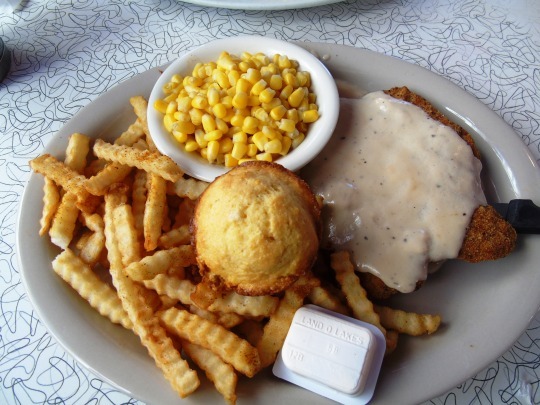

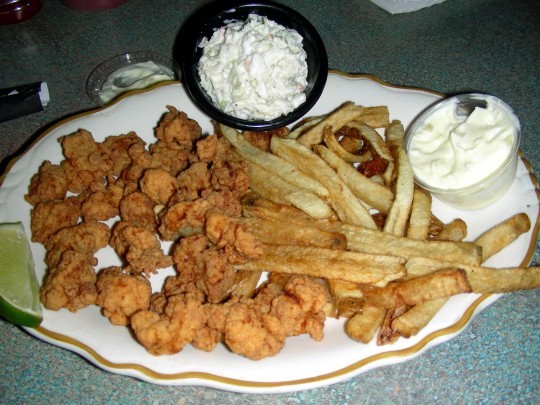


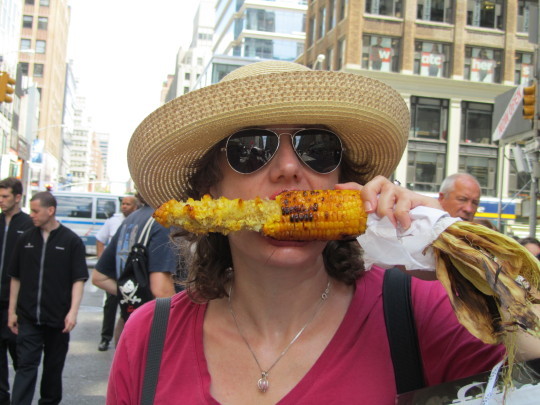

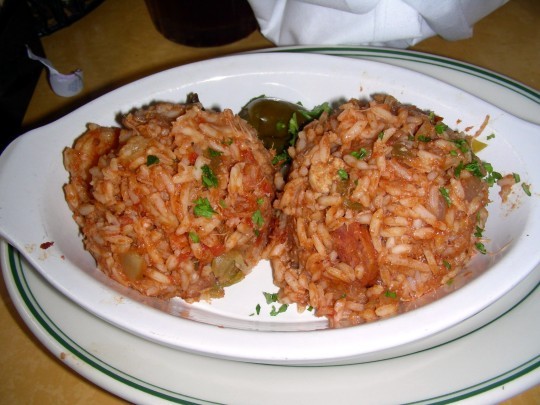


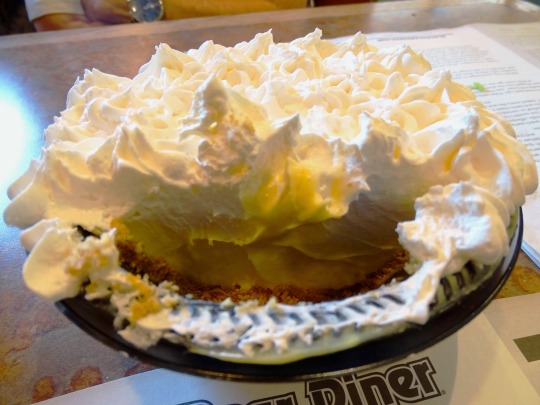
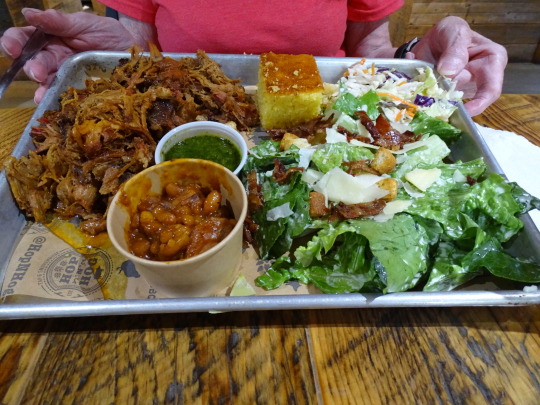
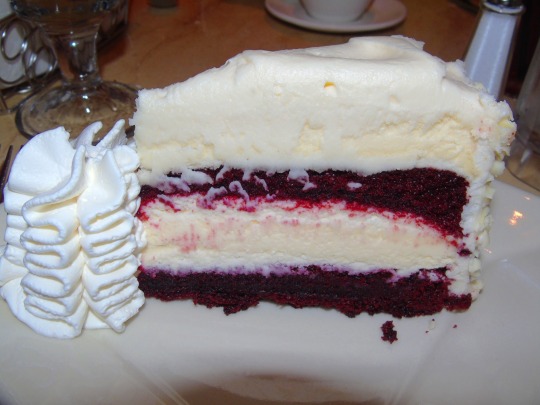
Southern Food Heritage Day
Every year, Southern Food Heritage Day is celebrated on October 11. The Southern Food & Beverage Museum celebrates the culturally rich and delicious food of the Southern States in America. The cuisine deserves to be recognized and celebrated officially because it is a testament to American history and legacy. Southern food also represents the essence of America — the coming together of a variety of people from all over the world, each bringing with themselves their own ingredients and recipes to create a unique cuisine. Iced tea, pickled shrimps, and fried chicken are some of the most loved Southern foods throughout history. Along with the cuisine, the day also celebrates the racial and ethnic diversity in America.
History of Southern Food Heritage Day
Southern Food Heritage Day celebrates the best that Southern food and beverages have to offer. The South’s cuisine in America can be found in the historical regional culinary form of states generally south of the Mason-Dixon line dividing Pennsylvania and Delaware from Maryland, along the Ohio River, and extending west to southern Missouri, Oklahoma, and Texas. The most notable influences on Southern cuisine are African, English, Scottish, Irish, German, French and Native American.
The food of the American South displays a unique blend of cultures and culinary traditions. The Native Americans, Spanish, French, and British have contributed to the development of Southern food, with recipes and dishes from their own cultures. Food items such as squash, tomatoes, corn, as well as certain cooking practices such as deep pit barbecuing, were introduced by south-eastern Native American tribes such as the Caddo, Choctaw, and Seminole. Many foods derived from sugar, flour, milk, and eggs have European roots. Black-eyed peas, okra, rice, eggplant, sesame seed, sorghum, and melons, along with spices, are of African origin.
Southern food can be further divided into categories: ‘Soul food’ is heavily influenced by African cooking traditions that are full of greens and vegetables, rice, and nuts such as peanuts. Okra and collard greens are also considered Soul Food, along with thick stews. ‘Creole food’ has a French flair, while ‘Cajun cuisine’ reflects the culinary traditions of immigrants from Canada. ‘Lowcountry’ cuisine features a lot of seafood and rice, while the food of the Appalachians is mostly preserved meats and vegetables. Southern food is partial to corn, thanks to the Native American influence.
Southern Food Heritage Day timeline
1860
Southern Diet Expands
Following the emancipation from slavery, the Southern diet becomes versatile.
1916
The Great Migration
African Americans travel from rural communities in the South to large cities in the North and West — they carry their cuisine with them.
1940s
Southern Foods in Restaurants
Southern foods start appearing on restaurant menus and appeal to a diverse clientele.
1964
Soul Food
This term, describing everyday Southern food, first appears in print.
Southern Food Heritage Day FAQs
What is the difference between Southern food and soul food?
The difference between soul food and Southern food is rooted more in class than race, and what families were able to afford to put on the table.
What is a typical Southern meal?
A traditional Southern meal is pan-fried chicken, field peas, greens, mashed potatoes, cornbread or corn pone, sweet tea, and a pie for dessert.
Why is Southern food so unhealthy?
The Southern diet is commonly high in processed meats, which are high in salt and in nitrates, which are in turn linked to heart risk. The high sugar content of the diet may also lead to negative effects, like insulin resistance and inflammation.
How To Celebrate Southern Food Heritage Day
Organize a cook-off: Gather all your friends and organize a cook-off on Southern Food Heritage Day. Revive old recipes or add a twist to create something new.
Go out for a meal: Enjoy the best of Southern foods at your favorite Southern foods restaurant. Don’t forget to enjoy the classics like fried chicken, hush pies, and pies.
Set up a barbecue: Barbecues are an integral part of the Southern food heritage. It is also one of the most popular styles of cooking. Barbecue your favorite meats and vegetables, and serve them with sauces and seasonings.
5 Facts About Southern Foods That Will Blow Your Mind
Redeye gravy has a unique recipe: Redeye gravy is made with pan drippings and leftover coffee.
It is more calorie-dense: Southern fried chicken breast typically has more than 400 calories in an ounce.
Peanut butter is an essential: Half the annual crop of peanuts is used to make peanut butter.
Collard green has been around forever: It’s been a part of our diet for more than 2,000 years.
Black-eyed peas are also good luck charms: It is believed that black-eyed peas bring good luck on New Year’s Day.
Why We Love Southern Food Heritage Day
A day to indulge: You cannot celebrate Southern Food Heritage Day without enjoying a hearty meal of your favorite foods. This is truly a day of indulgence!
Try something new: The best thing about Southern food is that it has something for everyone. Use this day to try a new food item or the cuisine of Southern heritage. Who knows, you might just discover your next favorite dish!
It is historically significant: Southern foods have a rich cultural and historical significance. Learn more about the origins of your favorite foods on Southern Food Heritage Day.
Source
#Peach Blackberry Cobbler#Peach Pie#Fried Chicken Sandwich#ice tea#Fried Chicken#collard green#Okra stew#Southern Food Heritage Day#USA#soul food#original photography#travel#vacation#restaurant#SouthernFoodHeritageDay#Coconut Cake#Shrimp and Grits#Hot Sausage Po'Boy#candied yam#Florida Gator Tail#Gumbo#Jambalaya#Pecan Pie#Chicken Fried#corn cob#Baby Back Ribs#11 October
8 notes
·
View notes
Text
¡Viva Almyra! LATAM influenced Headcanons about Fodlan's Eastern Neighbor
Climate and Geography: pretty consistent with the canon description, except that "Fodlan's Throat" is in fact a T shaped mountain range, and said mountain range partially bisects the country, with northwestern Almyra having arid deserts with little rainfall, and southwestern Almyra being more humid, with plains that receive substantial amounts of rain. The eastern region, as canon states, is dominated by large pine forests.
Language: much like Fodlanese resembles modern English, Almyran resembles modern Spanish. Spanish has plenty of influence from Arabic, so the canon Middle Eastern coding of Almyra can be consistent even if Spanish is their language.
Religion: a blend of Arabic and Mesoamerican influences. Since Claude dances around the idea of praying to gods in various supports, Almyra must be a polytheistic country with a whole pantheon of gods. Considering that native Almyrans place much importance on celebrating bravery in combat, their most important deities would be war gods, with their most important deity probably resembling Huitzilopochtli or Illapa,
Clothing: much of the clothing seen in Almyra shares similarities with Middle Eastern garb, but more utilitarian garb for commoners in the country would include Mesoamerican clothing like ponchos and rebosos.
Food: Almyra's main crops are corn and wheat, grown in the southern part of the country. Tortillas are a staple across the country. While Almyra's gods forbid eating what would be the equivalent of haram meat, they've still got tons of variety in what they can eat, from beef barbacoa cooked slowly in pits dug into the ground, to roasted chicken, to savory and spicy salsas made from native chiles and vegetables. There's a reason Claude/Khalid, and most Almyrans, never pass up on an opportunity for a good feast.
(I'm going to be honest, this whole thought exercise was just an excuse to have Mexican and Central American food present in the Fodlanverse in some form. It's one of the things I can say with pride I love from my home country)
Happy Hispanic Heritage Month! Claude is up next for these headcanons.
#fire emblem three houses#fe3h#fe16#almyra#fe almyra#hispanic heritage month#claude von riegan#fe khalid
12 notes
·
View notes
Photo
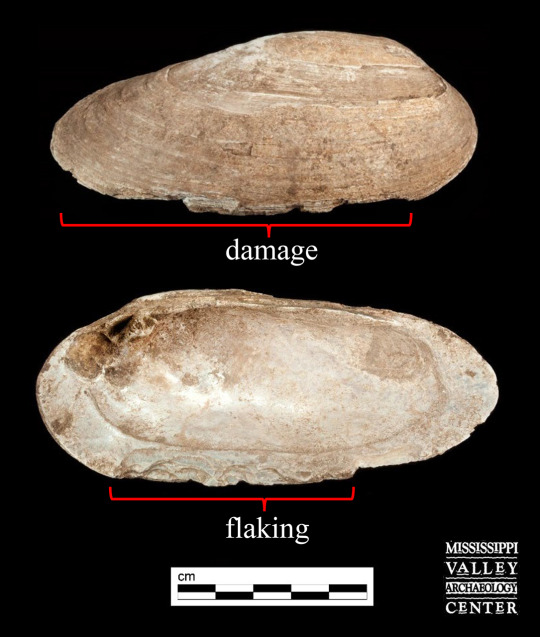
People in the past fashioned tools out of not just a variety of animal bones, but mussel shell as well. This complete right valve (shell) of a black sandshell (Ligumia recta) mussel from 2012 MVAC excavations beneath STH 35 in Onalaska, Wisconsin, is just one example. It was used for scooping, scraping, or digging, as shown by wear along the long edge opposite the hinge, where the left and right halves of the mussel shell would join. Damage is visible on the outside of the shell (top), as is flaking on the inside of the shell (bottom). This edge of the shell, given it came from a black sandshell, likely would have been razor-sharp initially.
Though not a common artifact for La Crosse area Oneota sites, similar modified and edge-damaged shells at Oneota sites along the Des Moines River in Iowa and to the west have been shown to have been used for shelling the kernels from ears of parboiled green corn. An extensive literature review and ethnographic studies by the late Dr. David Gradwohl found that a number of Native American tribes employed mussel shells in a rather elaborate process of preparing corn for immediate consumption or storage. Interestingly, at Iowa Oneota sites, the black sandshell was the preferred species used for the proposed corn shellers (see Gradwohl 1982:135–156). The black sandshell is not uncommon in large and medium rivers of the Midwest, including the Mississippi.
Gradwohl, David Mayer 1982 Shelling Corn in the Prairie-Plains: Archaeological Evidence and Ethnographic Parallels beyond the Pun. In Plains Indian Studies: A Collection of Essays in Honor of John C. Ewers and Waldo R. Wedel, edited by Douglas H. Ubelaker and Herman J. Viola, pp. 135–156. Smithsonian Contributions to Anthropology No. 30. Smithsonian Institution, Washington DC.
38 notes
·
View notes
Text
Come the warm, ripening days of summer and I imagine that I am closer to a more ancient, basic and healthful style of vegetable and grain eating than in my cold and meaty winters. I am seduced by my garden and neighboring farm stands vivid with color and flavor.
I avoid a lot of hot time in the kitchen. Much is eaten raw or almost: vegetable soups - gazpacho has many names and many recipes - vegetable sauces for rice or pasty and endless salads. I have corn on the cob and other vegetables in every form: grilled, roasted, steamed, stir-fried, puréed and combined in a variety of stews to be eaten hot, cold and at room temperature. Fresh herbs, garlic, onions and imagination sauce the dishes. The first beans from the pod or dried beans, fruit, cheese, bread and wine complete my menus.
There is almost no meat and little chicken or fish - an occasional grilling, a stew more vegetable than meat, a slice of cold meat or charcuterie, a boiled egg, a little tuna from the can.
I eat this way for pleasure as well as in a modern quest for a more healthful diet. Those came before us ate this way to take advantage of what they had - often limited. While we tend to see a cornucopia-vision of the past, rich in more seasonal, more natural foods, it is only partly true.
Winter in most climates was short of fresh vegetables, and the world relied on salting, pickling, drying and cold storage for any vegetables at all. The animal protein we are fending off today was in short, expensive supply.
With the best will in the world and without an evil intention, food writers and the natural inclination of all of us to glamorize the past and the far away have been guilty of distorting our view of the way the world eats. By selecting the best, the most festive food of other places or times, we have come to see them as halcyon visions of plenty, filled with meat and seafood, sugar and cream.
It is not sugarplum fairies, but roasts and fries, sausages and sautés, stews and cassoulets that frolic in our Rabelaisian dreams. Southern picnics are enriched with baked hams and fried chicken. Clambakes clutter the shores of a mythical New England. In that world of the imagination, native Africans are awash in chicken and ground-nut stew, native Americans feast on venison and buffalo, Greeks expand over countless dishes of succulent lamb, the Chinese are exquisite in damask while dining on unimaginably choice viands.
The English eat hearty roasts, silken salmon, and mountains of oysters. The French of the mind are various, either robust peasants glorying in rich stews or jeweled aristocrats whose famous chefs set forth succulent sauces. Our Italians live in a world of perpetual holidays, their risotti topped with pungent white truffles.
While not totally untrue - these foods did exist in each of these countries and were eaten by the natives at least upon occasion - such visions falsify the totality of real experience and may contribute to the glut of fat and cholesterol in our lives. We equate these festive foods with good living and think that ,if we can, we should eat this way all the time.
Our ancestors and many peoples all over the world today eat very differently from this skewed perception. Carbohydrate, or stodge, was what really fed and filled up most people. With bread as the staff of life in Europe, scarcity led to bread riots for centuries. Even in the recent past, when the government-fixed price of bread was raised in France, the announcement was carefully scheduled for August when almost all Frenchmen are on vacation.
Certainly, the staple food of the vast majority of the world is still rice, followed by bread and potatoes along with noodles - pasta among them - soy foods, yams, taro, yucca, corn, beans, pulses such as lentils, myriad grains and other starchy foods with names foreign to me. In the past and in much of the present, animal protein, when available, has been primarily a flavoring.
Beasts were not killed promiscuously. They were the cash crops and the providers of the milk and eggs. If a pig was slaughtered in the fall, that was a major event, and a family would hoard the preserved hams for Christmas and Easter, or sliver small amounts for a taste at many meals. A prosciutto bone or other ham bone was an asset to be used and reused in soups until flavorless. Fresh meats were rare; only the overage animal or the single, religiously festive springling was sacrificed.
To envisage a chicken in every pot was to dream of luxury indeed - the most luxurious of Sunday dinners.
if other meats were salted and smoked like bacon, or pickled like corned beef, air-dried like grisson or jerky, or preserved in fat like confit, it was to keep them over the winter and dispense them parsimoniously as special treats.
So when we read recipes for peasant dishes crammed with meat, we should remember we are reading about rare treats, not daily fare. Even fishing nations could have uncertain catches, rough seas and months when it was impossible to put out upon the water. Even plenty might need to be sold. A home-cooked paella was mainly rice, seasonings, oil and vegetables.
The great go-along-withs have been vegetables and fruits, fresh when in season, pickled or preserved for inclement times. A little fat would have come from the possibilities of each region - olive oil, butter and lard. Food was about survival and pleasure when possible. No one got more than nutritionally sound share of meat and fat over the course of a year. It is these daily recipes that are by and large missing or recorded primarily as accompanying dishes in our cookbooks and kitchens.
It is up to us to re-create out of our plenty the sane eating and pleasures that scarcity and invention, herb patch and garden, bestowed on our forebears.
"The Real Past", from The Opinionated Palate: Passions and Peeves on Eating and Food by Barbara Kafka
8 notes
·
View notes
Text
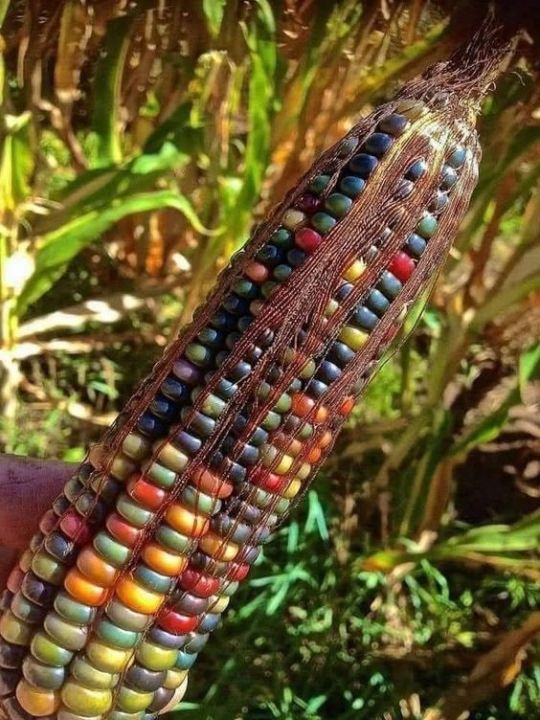
This is the most beautiful corn. It is a Native American variety called 'Glass Gem Corn' and yes it really does grow like that.
3 notes
·
View notes
Text
Glass Gem Cherokee Indian Corn Seed Pack
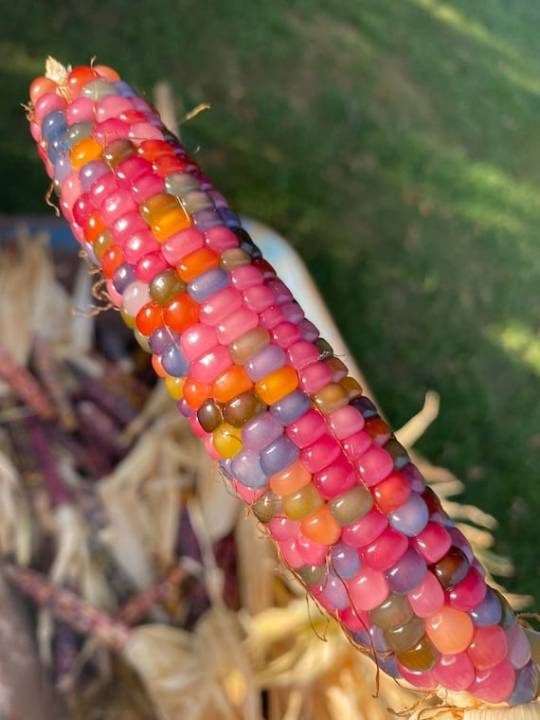
Introducing Glass Gem Cherokee Indian Corn, a true marvel of nature that will captivate your senses and beautify your garden. Personally recommended by Chappy the Gardener, this 20-seed pack brings you the most beautiful corn in the world. Experience the wonder of vibrant, translucent kernels that resemble glistening gemstones. Elevate your gardening experience and create a stunning display with Glass Gem Cherokee Indian Corn. Unmatched Aesthetic Appeal: Glass Gem Cherokee Indian Corn solves the problem of mundane garden landscapes by adding a touch of extraordinary beauty. Its unique and vibrant kernels display a stunning range of colors, including blues, purples, pinks, and yellows. Grow this corn variety to create a visual masterpiece that will leave your neighbors and friends in awe. Organic Gardening Delight: This corn seed pack is perfect for organic gardeners, offering the joy of growing stunning corn while adhering to organic gardening principles. Glass Gem Cherokee Indian Corn seeds are non-GMO and can be grown without the use of synthetic chemicals, allowing you to enjoy the beauty of nature in a sustainable and eco-friendly way. Cultural Heritage Preservation: By growing Glass Gem Cherokee Indian Corn, you contribute to preserving the cultural heritage and agricultural history of the Cherokee Indian tribe. This unique corn variety has deep roots in Native American culture, and growing it helps honor and celebrate their traditions. How do I germinate Glass Gem Cherokee Indian Corn seeds? To germinate Glass Gem Cherokee Indian Corn seeds, plant them directly in well-prepared soil when the soil temperature reaches a consistent 60-65°F (15-18°C). Sow the seeds 1-2 inches deep and 10-12 inches apart in rows spaced about 30-36 inches apart. Ensure the soil is kept evenly moist, and seedlings should emerge within 7-10 days. Can Glass Gem Cherokee Indian Corn be eaten? Glass Gem Cherokee Indian Corn is primarily grown for its ornamental value, but it is also edible. However, its taste and texture differ from traditional sweet corn varieties. The kernels tend to be harder and less sweet, making it more suitable for grinding into cornmeal or decorative purposes. Consider it a stunning addition to your garden rather than a primary food source. Can Glass Gem Cherokee Indian Corn cross-pollinate with other corn varieties? Yes, Glass Gem Cherokee Indian Corn can cross-pollinate with other corn varieties, including sweet corn. To maintain the purity of the Glass Gem variety, it's essential to isolate it from other corn varieties by a distance of at least 100 feet or plant it in different time frames to minimize cross-pollination. "I already have corn varieties in my garden." While you may already have corn varieties in your garden, Glass Gem Cherokee Indian Corn offers a truly unique and visually stunning addition. Its vibrant, translucent kernels set it apart and create a mesmerizing display that will amaze anyone who sees it. "I'm concerned about the difficulty of growing corn." While growing corn requires attention and care, Glass Gem Cherokee Indian Corn is relatively easy to grow. With proper soil preparation, adequate sunlight, and regular watering, you can cultivate this exceptional corn variety and enjoy the rewards of its breathtaking beauty. "I'm unsure if it will thrive in my region." Glass Gem Cherokee Indian Corn is a versatile variety that can be grown in various regions with proper care. It is adaptable to different climates and performs well in many areas. However, it's essential to check your specific region's growing conditions and ensure they align with the requirements for successful corn cultivation. Experience the mesmerizing beauty of Glass Gem Cherokee Indian Corn in your garden today. Purchase your 20-seed pack and embark on a journey of visual delight and cultural appreciation. Don't miss the opportunity to grow the most beautiful corn in the world. Order now and let your garden shine with the radiant colors of Glass Gem Cherokee Indian Corn! Read the full article
#CarlBarnes#CherokeeIndian#corn#farm#FlintCorn#gardening#GlassGemCorn#GMO#Heirloom#plant#Popcorn#seeds#vintage
1 note
·
View note
Text
Week 5 Observations
1.29.25

Saltwort
Batis maritima
Observed at Galveston Island State park 1.29.25. It is native to Texas and is found on sandy beaches, salt marshes, and mangroves. It is considered a pioneer plant which is a species of plant that is the first to grow in areas where natural disasters have occurred (like hurricanes) and enables the more complex plant species to take root later on. It is able to do this because it can handle harsher conditions with less nutrients than other species. Such an important plant for the health of our marshes!
Native Americans have eaten saltwort raw, cooked or even pickles! The roots can be chewed like sugar cane and boiled into beverages.
Fun fact: the ashes of saltwort have been used to make soaps and glass because the sodium levels are so high.
#saltwort #Batismaritima #citizenscience #flora #plant #heartyplant #pioneerplant #nature #outdoors #january #january29 #2025 #picoftheday #project365 #day29
1.30.25

Splitgill Mushroom
Schizophyllum commune
Observed at Galveston Island State Park 1.30.25. I spotted these tiny (~1-2cm) mushrooms on a decaying stick in the dunes.
The caps are covered in white hairs. This mushroom can stay dry for decades and then be revived by moisture!
It’s a tough, rubbery mushroom that has been eaten in tropical countries over tender mushrooms that rot so quickly in the humidity.
Yet they also can cause allergic reactions and fungal infections. Don’t go inhaling their spores!
These mushrooms have the highest amount of sexes than any other species with over 28,000!! This guarantees diversity of genetic material is much higher.
What a wild little mushroom!
#splitgillmushroom #Schizophyllumcommune #citizenscience #mushroom #fungus #nature #outdoors #january #january30 #2025 #picoftheday #project365 #day30
1.31.25

White-speck Moth
Mythimna unipuncta
Observed at Galveston Island State Park (moths seem to love our breeze way) 1.29.25
It is native to North and South America. Introduced to Africa, Europe & Asia. It is a nocturnal agricultural pest. Another name for it is armyworm moth and it gets this name from the caterpillars that line up in huge groups and move from crop to crop damaging them. Apparently corn is a favorite though they will eat a large variety of crops.
Fun fact: an adult can fly 62 miles in one night!
#whitespeckmoth #Mythimnaunipuncta #citizenscience #moth #nature #outdoors #insect #january #january31 #2025 #picoftheday #project365 #day31
2.1.25

Lesser Black-backed Gull
Larus fuscus
Observed 1.28.25 at Galveston Island State Park. It is not native to Texas but is a common winter visitor. It is believed that the ones visiting Galveston are most likely from Iceland or Greenland.
They are omnivores eating seeds, berries, eggs, chicks, small mammals & birds, sea stars, mollusks and fish, like this Atlantic Needlefish.
Their call is similar to the Herring Gull and sounds like a laughing cry.
#lesserblackbackedgull #Larusfuscus #citizenscience #bird #fish #animals #nature #outdoors #february #february1 #2025 #picoftheday #project365 #day32
2.2.25

Bushy Bluestem
Andropogon glomeratus
Observed at Galveston Island State Park 2.2.25.
It is a native prairie grass to Texas and is widespread across the Americas.
It provides food and habitat to song birds a some butterfly larvae.
In the growing season the grass is green but is this luscious copper color in the fall/winter.
Unlike other bluestem species the bushy bluestem thrives in moist areas, like wetlands and around ponds!
Some Native American tribes even use the roots to treat poison ivy.
#bushybluestem #Andropogonglomeratus #citizenscience #prairie #grass #nature #outdoors #february #february2 #2025 #picoftheday #project365 #day33
2.3.25

Common Chickweed
Stellaria media
Observed 2.3.25
Native to Europe, invasive weed in Texas and most of America.
It is a cool weather annual that grows in dense mats. It out competes nature spring plants by taking nutrients and sun from them.
Each plant can produce 600-1500 seeds and those seeds can be viable for years! Not good when it’s an invasive species.
Besides spreading through seeds it also spreads vegetatively due to its fibrous roots. So if you are weeding make sure to dispose of the plant material because it will reroot if you don’t.
Interesting fact I learned is that it can store plant viruses and pests!
#commonchickweed #Stellariamedia #citizenscience #weed #invasivespecies #nature #outdoors #february #february3 #2025 #picoftheday #project365 #day34
2.4.25

Seven-spotted Lady Beetle
(Coccinella septempunctata)
Observed 2.4.25
This species was introduced to North America 3 separate times and finally took hold in the 1970s. They’re used to control aphid populations on crops because it is a carnivorous beetle. It has since become invasive, taking resources from native species.
The bright color of this species is used to warn would be predators away and they will secrete a toxic fluid from their leg joints when threatened making them taste bad.
I watched this one climb all over leaves, grass and weeds. They’re quite nimble for being so bulky!
#sevenspottedladybeetle #coccinellaseptempunctata #citizenscience #ladybug #insect #nature #outdoors #february #february4 #2025 #picoftheday #project365 #day35
#citizen science#nature#outdoors#flora#native#saltwort#marsh#plants#splitgill mushroom#mushrooms#fungus#white-speck moth#moth#insect#pest#lesser black backed gull#birds#Atlantic needlefish#fish#food#beach#bushy bluestem#prairie#grass#invasive#weed#common chickweed#fauna#seven spotted lady beetle#ladybug
0 notes
Text
Native Americans Taught Us More Than Just Turkeys and Corn
Recently I had to have some dental surgery. (Did you ever wonder how people used to handle their dental problems? The big secret-they rarely had any, before processed foods and chemicals. But that’s the subject of a different blog post.)
For my own dental surgery, my dentist recommended a pain killer for after the anesthesia wore off. I bought some just in case I needed it. But I was able to handle my discomfort with homeopathy (lots of oral Arnica Montana before and afterwards) and herbal nerve pain reliever. I used a combination of California poppy, Jamaican dogwood. Honestly, I was uncomfortable the first night, but I still slept, and the day after there was very little discomfort left.
Pain is no fun, and I don’t like to see anyone suffer. So, I love finding natural medicine that has no downside, and doesn’t add to the toxic burden our organs already have to deal with.
So many of our wonderful herbal medicines were already being used by the Indigenous Americans who helped the Pilgrims and celebrated the first Thanksgiving. We have all grown up with the stories about the gifts of turkeys and corn that were native to our Eastern shores. But only herbalists talk about the deep debt we owe to the First Nations people for their wisdom and sharing of plant-based medicines that grew here and were unknown in the herbal tradition of Asia and Europe.
One herb is called “American Ginseng.” Unlike it’s popular cousin, “Siberian Ginseng” which is a warming herb, the American version is cooling, explaining it’s use for calming fevers and inflammation.
“Goldenseal” is a favorite herb for mucous membranes, which includes sinus and lungs. I have a nasal spray made with Golden Seal that works wonders for opening up nasal passages when congested.
Ask many menopausal women what assisted them through the transition and they will swear by “Black Cohosh.” It helps with cramps, hot flashes and mood. i
Perhaps best known is “Echinacea,” which was widely used for a variety of ailments from anthrax, snakebite and pain to its more common use for colds and sore throats. Native peoples observed that Elk sought out the plant when wounded or sick.ii
It turns out that many Indigenous people learned about plant medicine from our primate buddies such as apes and chimps. Dr. Tieraona Low Dog, an MD and premier teacher of herbal medicine, has some fascinating stories about going to Africa and discovering that observing what animals did when they were sick informed humans about natural medicines.
Witch Hazel is another common remedy that we learned from Indigenous people.
The list of plants that were in use in the Americas when Europeans arrived is several pages long, if you check out this link on Wikipedia . https://en.wikipedia.org/wiki/Native_American_ethnobotany
I love turkey and most kinds of potatoes, pumpkin pie, and all the trimmings. But this Thanksgiving I will be very grateful for every creature and person along the entire chain of discovery about plants and plant-based medicines. My life would not have been as rich without this great tradition, and the opportunity to share this wisdom with all of you. After all, these were the first medicines on the planet, and trying to extract and patent the active ingredients in herbal medicine has created some helpful drugs, but also caused some harm and addiction. When human illness is no longer considered an opportunity for gargantuan profits we will have healthier people and pets. And if enough people learn how to use plant medicines, we can be less dependent on the system.
Imagine if the medical industry had this viewpoint:
“All plants are our brothers and sisters. They talk to us and if we listen, we can hear them.”
— Arapaho Proverb
Happy Thanksgiving to you and all your loved ones!
ihttps://www.thesacredscience.com/3-powerful-indigenous-herbs-from-north-america/
iihttps://en.wikipedia.org/wiki/Native_American_ethnobotany
0 notes
Text

Another of our favourite snacks, hot fresh popcorn. Answers to some of the questions we receive. If you have any others just add them in the comments and we will try and answer them for you. How Was Popcorn Invented The answer to that s lost in the mists of time. In 1948, in New Mexico, Herbert Dick and Earle Smith discovered small beads of corn, and popped kernels. This was inside a cave known as the Bat Cave. When they were tested with carbon dating, they were found to be 5600 years old! The Aztec indians used popped corn, not only as food, but also to decorate clothing and ceremonial wear. In north America, colonists were popping corn after adopting it from the native Indians. It was also used as a breakfast cereal with milk and sugar. By the 1800's it was one of the most widely eaten snack foods. How Does It Pop The popcorn kernels contain a minute amount of water, surrounded by soft starch inside a hard shell. As it is heated up, the water expands and the pressure starts to build. This pressure builds against the hard outer shell, which eventually gives way. As it bursts the soft starch rapidly inflates turning the kernel inside out. The steam is released and the corn is popped, ready to eat. Where Do Popcorn Kernels Come From We have all eaten popcorn niblets, or corn on the cob. Turns out that doesn't make popcorn. A particular species of maize called 'Zea mays everta,' is the only variety that pops. Though there are over 100 strains of this with different flavours. One strain produces the mushroom shaped popcorn, whilst another turns into the snowflake style, which tends to be the most popular for snacking. Different Strains Of Popcorn Is It Bad For You It's low in fat and high in fibre. Really it is a healthy snack. BUT, as soon as you start adding butter, caramel, sugar, salt and toffee it ceases being healthy. So you could keep it as a natural healthy snack, but where is the fun in that. It should be slathered in butter, and sugar. Or if you are American or just plain weird, salt. Are Popcorns Carbs Yep definitely are. Around 74g in every 100g in fact. So definitely high on the scale. Will Popcorn Help You Poop As a matter of fact it will, it is high in fibre so it can provide relief from constipation. And it sure as hell will be a lot more pleasant than a suppository. Is It Harmful To Cats Popcorn itself isn't no, but some of the additives and toppings may be, so before sharing with your feline friends it would be wise to check with your vet. The unpopped kernels can be harmful to their teeth, or even pose a choking hazard. Read the full article
0 notes
Text

Women’s History Month March 2024
Discover a bouquet of women botanists and plant scientists from history!
Barbara McClintock
Why does Native American flint corn (Zea mays) often have a multicoloured mosaic pattern of kernel colours? The biological answer is transposons or “jumping genes”! Dr. Barbara McClintock (June 16, 1902 – September 2, 1992) was the American cytogeneticist who discovered that certain genetic loci can change position on chromosomes, a phenomenon called “transposition”, using multicoloured corn as the model organism between 1948 and 1950. McClintock courageously pursued her calling as a biologist despite societal attitudes discriminating against women in scientific careers. She went on to win the 1983 Nobel Prize for Physiology or Medicine for her work on transposons.
Janaki Ammal
The first woman to earn a PhD in botany at a university in the USA was actually from India! Janaki Ammal (4 November 1897 – 7 February 1984) was born in Kerala, India, to a family of civil servants. She travelled to the USA via scholarships for Asian students and earned both a Masters degree and PhD from the University of Michigan by 1931. At the John Innes Centre in the UK, she co-authored the Chromosome Atlas of Cultivated Plants (1945). Later in her career she worked on breeding superior varieties of sugarcane and eggplant in her home country.
Estelle Leopold
A botanist interested in both the past and the future of plant life, Estelle Leopold (January 8, 1927 – February 25, 2024) pioneered the use of fossilised pollen and spores to document environmental changes over vast time periods. Her research uncovered connections between climate change and evolution plus extinction of plant species, including trends of the central regions of continents experiencing more species turnover than coastal areas. Her work as a conservationist led to the protection of the Florissant Fossil Beds National Monument in Colorado, and she also helped prevent the building of dams in the Grand Canyon as well as oil shale development and the transport of nuclear waste in the Pacific Northwest.
#womeninscience#womenshistorymonth#plantscience#botany#barbaramcclintock#scientist#womenscientists#botanists#janakiammal#estelleleopold#history#inspiringwomen#WomenInSTEM#womeninplantscience#PlantBiology
#katia plant scientist#botany#plant biology#plants#plant science#women in science#women in stem#stem#stemblr#science#plant scientist#female scientists#women scientists#womens history#international women's day#women's history month#women in plant biology#women in biology#biologist#researchers#academics
4 notes
·
View notes
Photo


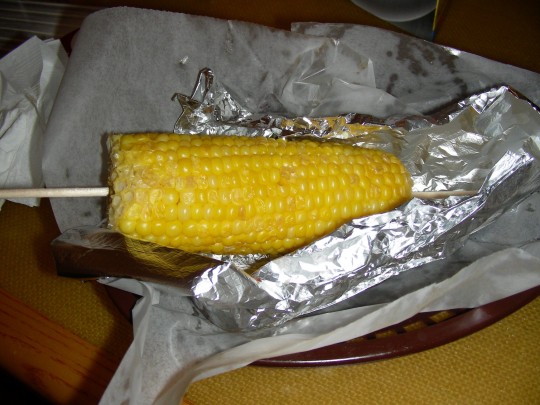

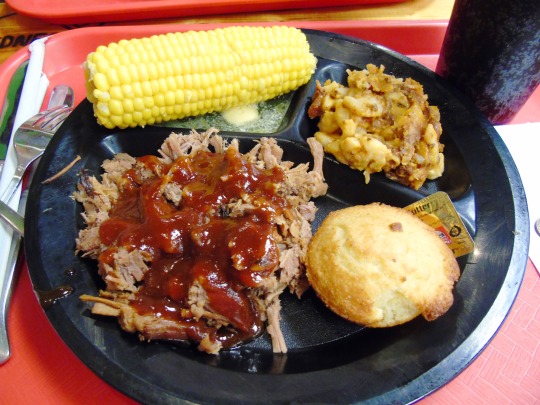
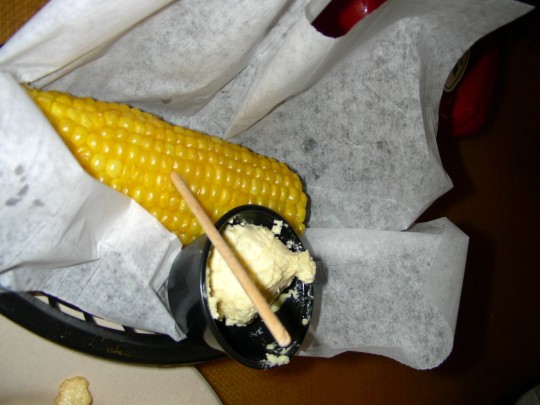
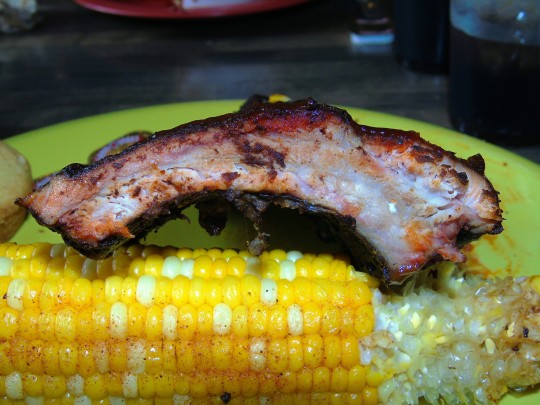
National Corn on the Cob Day
Nothing says summer quite like a perfectly grilled (or boiled) corn on the cob, doused with butter, salt, pepper, or perhaps a more creative seasoning profile.
In the height of summer, under a cornflower blue sky filled with cotton-ball clouds, the smell of grilled meat fills the air. Children are laughing and playing in the creek, and the adults are setting up the picnic tables with checkered table cloths, red solo cups and paper plates.
In the middle of the table sits a giant bowl covered with a layer of aluminum foil, with steam gently escaping from around the edges, rich with the smell of fabulous, buttery corn on the cob.
Corn on the Cob Day celebrates events like these, whether held outdoors or indoors. It reminisces about the gathering of family around one of the sweetest healthy cookout treats that is available throughout the summer.
It’s Corn on the Cob Day!
History of Corn On The Cob Day
The history of Corn On The Cob Day goes back to a time even before European settlers actually first came to the Americas. Corn is a new world plant, native to the American lands, that was originally enjoyed by the Native Americans who were there before the westerners “discovered” the land.
Since then, corn has made various appearances in dishes all over the world, and the by-products of this plant have been used in quite literally millions of different products. For instance, in the United States, high fructose corn syrup is found in almost every candy, and certainly, in almost every carbonated beverage that can be found. Other corn products that are used en masse include oil, cereals, snacks, breads and even fuel.
Corn on the cob comes in more varieties than a person might think! Sure there’s the traditional yellow corn, but there are also white and mixed colored corn that can be eaten on the cob.
In any case, almost every type of corn can be prepared into corn on the cob through various methods of preparation, and each brings its own combination of tastes and flavors. There is no limit to the delicious meals and fantastic flavors when a little corn on the cob is added to the table.
Corn On The Cob Day is the opportunity to try different flavors, grab the butter, and enjoy delicious corn on the cob!
How To Celebrate Corn On The Cob Day
Celebrating Corn On The Cob Day is simple and fun! Try these ideas for celebrating or create new ideas:
Try Different Ways of Cooking Corn on the Cob
Start by cooking up some corn on the cob in the traditional way–boiling. It only takes a few minutes in the water (don’t salt it first!). Then enjoy eating it with a generous heap of butter and salt!
Now that opens the doorway to a whole variety of options to be considered. Another way to prepare the dish is to wrap corn on the cob in aluminum foil and let it roast in the coals of a campfire (or in the same way on a gas or charcoal barbecue grill) until it’s positively bursting with deliciousness.
Explore Seasoning Options
Anyone knows that corn on the cob needs butter and can be delicious just on its own. But don’t stop there because other options are worth a try as well! Start by adding butter as a base, and then dust the corn on the cob with a choice of seasonings. Simple salt can work just fine, or get more creative with seasoning salt, pepper, or any of a variety of spices that suit your palette.
Try these varieties:
Cajun Corn on the Cob. Mix garlic powder, onion powder, red pepper, paprika and oregano, then sprinkle lightly.
Corn on the Cob Citrus Seasoned Salt. Add sea salt, hot smoked paprika, black pepper, smoked salt, and finely grated orange zest, then rub on (while cooking on the grill, if preferred).
Italian Corn on the Cob. Go Italian by sprinkling buttered corn on the cob with parmesan cheese, powdered garlic and italian seasonings (basil, oregano, rosemary, thyme and marjoram).
Learn More About Corn
While it is in most people’s kitchens at one time or another, many people don’t know some of these fun facts about corn. For instance, although the most common corn color is yellow, it can also be cultivated to be purple, green, blue-gray, red, white and even black. Here are some other fun facts about corn:
The word ‘maiz’ or ‘maize’ has Native American/Spanish language origins and that is what this grain is called in many languages.
Most cobs of corn have an average of 800 kernels, arranged in 16 rows around the cob.
Corn is produced on all of the inhabited continents on the planet (but it cannot grow in Antarctica).
The United States is the largest single producer of corn on the planet, providing at least 40% of the world’s corn harvest.
Celebrate Corn on the Cob All Summer Long
While corn on the cob day comes at the beginning of June, anyone from the corn growing belt in the US knows that the best time to get fresh corn on the cob is at the end of the summer. The great news is that it isn’t necessary to choose between the two–just go ahead and celebrate at both times. In fact, corn on the cob can be celebrated all throughout the summer!
Source
#Baby Back Ribs#toast#fries#bbq#summer 2022#2009#2013#2014#New York City#original photography#travel#vacation#street food#USA#restaurant#pulled pork#Mac 'n' Cheese#corn bread#National Corn on the Cob Day#11 June#NationalCornontheCobDay#national day#eating#tourist attraction#landmark#Manhattan
28 notes
·
View notes
Text
Native American Seeds Flown Aboard Space Station
The Choctaw Heirloom Seeds investigation flew five varieties of heirloom seeds from the Choctaw Nation of Oklahoma aboard the International Space Station in early November 2023. The seeds are Isito (Choctaw Sweet Potato Squash), Tobi (Smith Peas), Tanchi Tohbi (Flour Corn), Tvnishi (Lambsquarter), and Chukfi Peas. The seeds spent six months aboard station, returning to […] from NASA https://ift.tt/5JSaADV
1 note
·
View note
Text
Nutrition's Impact on Global Oral Health Practices

Nutrition's Impact on Global Oral Health Practices
Oral health is greatly influenced by nutrition, which is influenced by both economic and cultural norms. Dr. Trisha Deb Morgan Hill at Avenue Dentistry in Morgan Hill, California, is aware that cultural differences in eating patterns have an impact on oral health outcomes. This blog examines the relationship between oral health and diet in a variety of cultural and socioeconomic contexts.
The Interplay Between Nutrition and Oral Health
A well-balanced diet provides essential vitamins and minerals critical for maintaining strong teeth and healthy gums. Key nutrients include:
Calcium: This mineral fortifies dental enamel, the outermost covering of teeth, and is present in dairy products, leafy greens, and some fish.
Vitamin C: Found in fruits and vegetables, this vitamin is essential for healthy gums and helps to avoid diseases like gingivitis.
Fiber: Consuming foods high in fiber, like fruits and vegetables, increases salivation, which reduces the creation of acids that cause decay and helps wash away food particles.
Cultural Influences on Dietary Practices
Latin American Diets
Traditional diets in Latin America place a strong emphasis on fresh vegetables, fruits, and legumes. In addition to providing nutritional advantages, foods like avocados, legumes, and crunchy vegetables also support dental health. Chewing on fibrous foods, for example, helps naturally clean teeth. However, these communities' dental health is at jeopardy due to the prevalence of sugary drinks and pastries.
African Cultures
Chewing sticks manufactured from particular trees are one example of a traditional practice that is thought to improve oral health by mechanically cleansing teeth in various African communities. However, if these sticks are not well cleaned, they may occasionally contain dangerous bacteria. Compared to more sugar-laden diets that are common in metropolitan areas, diets that are high in whole grains and low in sugar tend to have lower incidences of dental caries.
Asian Dietary Habits
Due to high prevalence of lactose sensitivity, some Asian communities may prioritize rice and vegetables above dairy in their dietary choices. If alternate sources are not prioritized, this may result in a decrease in calcium consumption. Cultural beliefs can also influence attitudes toward dental care. For instance, certain groups may place less value on oral cleanliness because they believe that poor breath is a sign of excellent health.
Native American Diets
Lean meats and nutritious grains like corn are common components of traditional Native American diets. In general, these diets are rich in nutrients that promote dental health and low in processed sweets. However, processed diets heavy in fats and sugars have become more popular due to modern influences, which has a detrimental effect on dental health outcomes.
Economic Factors Affecting Nutrition and Oral Health
Economic status significantly influences dietary choices and access to dental care. In low-income communities worldwide:
Limited Access: Many individuals lack access to nutritious foods due to economic constraints. This often results in diets high in refined carbohydrates and sugars.
Education: Lower levels of education about nutrition can lead to poor dietary choices that adversely affect oral health.
On the other hand, people with greater incomes usually have easier access to dental care and nutrition instruction. Healthy diets high in fruits, vegetables, lean meats, and whole grains are frequently consumed by these populations.
Addressing Cultural Beliefs and Practices
Understanding cultural beliefs surrounding nutrition and oral health is crucial for effective dental care. For instance:
Preventive Education: While honoring patients' dietary preferences, culturally aware educational initiatives can assist patients in realizing the significance of oral health nutrition.
Community Involvement: Building relationships with local authorities can promote trust and healthier eating practices among a range of demographics.
By advocating for individualized dietary advice that are in line with our patients' cultural backgrounds, we at Avenue Dentistry aim to integrate these findings into our practice.
Conclusion
In all cultures and economic systems, oral health is greatly influenced by nutrition. Avenue Dentistry may better serve the diverse community in Morgan Hill by being aware of the distinct eating behaviors driven by economic and cultural variables. Improving overall dental results requires raising awareness of the connection between oral health and diet. All of our patients will have healthier smiles if we promote balanced meals full of vital nutrients while taking ethnic preferences into consideration.
0 notes